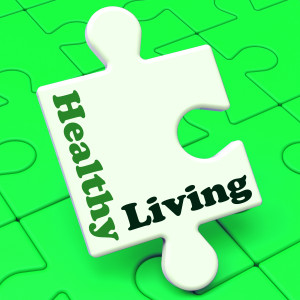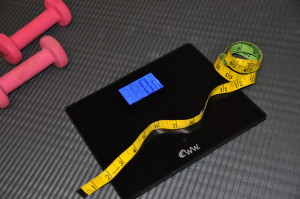So besides water, what other surprising things make us gain weight?
Last time we talked a bit about how water, something so good for us, can impact our weight and why the scale shouldn’t be our only measure for success. Another reason we expand beyond the scale to track our progress is so we can make certain we are losing fat tissue and gaining muscle tissue. Muscle tissue is denser than fat tissue, which is why we like to say ‘muscle weighs more than fat’. Actually, that isn’t the point, a pound is a pound is a pound. But, we DO want to acknowledge that the scale will reflect this transformation, often by going up at times during our journey. So, tracking our progress by using measurements taken with a tape measure, and measuring our Body Fat % will serve as more accurate, and hopefully, more encouraging indicators of the work you are doing. The use of calipers or other methods for tracking our body fat % is a little more precise, but can be tricky if you don’t have the right tools. An easier method for the average person is to use a tape measure to take and record your measurements and watch them shrink! (A list of suggestions is at the end of this article).
Not eating enough is another cause for weight gain. This one confuses most people-I get it all the time with my clients. The simple explanation that we have all probably heard (but don’t fully understand/believe) is that our body thinks we are starving it and decides to store incoming calories as fat. This is partially true, however, there’s a little more to it. When we don’t eat enough, our blood glucose (=sugar=what we use for energy to live) levels drop. When they drop below a certain level, the body’s response is to secrete a hormone called cortisol, which breaks MUSCLE tissue down into sugar so we can continue to have the energy we need to live-to survive. The problem is two-fold, we are losing muscle AND the unused portions of sugar produced in this process ARE stored as fat for later (because the body is responding to the ‘starvation’ it senses).
Another way that not eating enough manifests itself as weight gain is in slowing the metabolism (process of turning nutrients into glucose for energy). As the body slows the process of metabolizing it conserves fuel (kind of like we do by letting off the accelerator and turning off the air conditioner when our car is low on gas). Again, this results in residual glucose which is stored as fat for later use. (In keeping with the analogy, when you get to the station to fill up your tank, what was left turns into an extra fender – lol!) Another downer is that studies have shown that each time you go through the process of ‘bad’ dieting (and slowing the metabolism), you have a tougher time overcoming the effects. Some statistics indicate that you can slow your metabolism up to 40% after just one dieting experience AND it can take up to a year to return to your pre-diet calorie-burning capacity!
So, the secret to your dietary success is to keep those glucose levels balanced throughout the day – keeping the metabolism high and need for fat storage low. I try to simplify this for my clients. I don’t want them to get bogged down in counting calories and weighing and measuring food (unless that is what works for them-which is the case for only a small %). Instead, I give them some reasonable guidelines, such as:
1. Eat 5 meals per day
2. 3 meals, approx. 300-500 cal. each, 2 snacks <250 cal each
3. Eat your first meal 30-60 minutes after you wake up
4. Eat every 3-4 hours after your first meal
5. Drink ½ your weight in ounces of water every day (150#=75 ozs per day)
6. Move your body 30+ min at least 3x/week
Obviously, their plans become more individualized as they progress, but this is a place for ANYONE to start. So, get your metabolism revved up and nourish and hydrate your body well, and you, too, will start to feel and see the results of a healthier lifestyle and put and END to the yo-yo dieting and stop sabotaging your metabolism so you can lose weight the healthy way!
Until next time, Be Well-Your Bff
List of tape measure points:
-Neck
-Shoulders=arms relaxed@ sides, across the middle of deltoid (muscle covering shoulder cap)
-Chest=2 spots: under arm pit, above pectoral line (required for Navy version of Body Fat % calc.); or under arms, across pectoral line, arms relaxed at sides
-Upper Arm=middle/between shoulder and elbow
-Lower/Forearm=at largest circumference
-Abdomen=at umbilicus
-Waist=smallest part of torso
-Hip/buttocks=at largest point
-Thigh=at largest point, just below glutes (butt) OR measure 5-6” above knee and measure circumference at that point
-Calf=largest circumference between knee and ankle


Recent Comments